#BHP Group
Text
Four ASX High-dividend Yield Stocks Worth Buying in 2023
The year 2023 is set to welcome new heights in the stock market with high dividend stocks. Even investors are drowning more towards high-dividend-yielding stocks that pay decent returns regularly.
The considerable part is, investing in high-dividend-yielding stocks could ensure consistent income generation to endure a topsy-turvy market in the widespread recession fears and foreseeable future.
Are you also planning to invest in ASX stocks? Here are the top four ASX stocks with high-dividend worth buying in 2023. Read further to learn more.
#ASX BHP#ASX Companies#ASX NEWS#AVA Risk Group Limited#BHP Group#BHP Group Limited#BHP Group Limited (ASX: BHP)#Dividend Yield Stocks#Fortescue Metals Group#stock market#TerraCom Limited#asx updates
0 notes
Text
Brazilian dam collapse High Court case against BHP could grow larger

A "very significant" number of people may join what is already thought to be one of the largest claims in English legal history in a case against mining company BHP Group Ltd over a deadly dam collapse in Brazil.
Lawyers representing around 200,000 Brazilians are bringing a multibillion-pound legal action against BHP Group following the collapse of the Fundao dam in November 2015.
The failure of the dam, which held waste from an iron ore mine in Minas Gerais state in south-eastern Brazil, killed 19 people and sent more than 40 million cubic metres of toxic waste into the Doce River.
The fallout led to what has been dubbed Brazil's worst environmental disaster, contaminating drinking water for hundreds of thousands of people and obliterating entire villages, with pollution eventually found more than 400 miles away.
Continue reading.
#brazil#politics#brazilian politics#environmentalism#environmental justice#mariana dam burst 2015#bhp group ltd#mining#mod nise da silveira#image description in alt
4 notes
·
View notes
Text
Can't stop thinking about how, at the funeral reception, I mentioned to my friend one of the guys (evidently his cousin) was hot, and he went "Ew, no, really? Him? Usually it's my other cousin" and gestured to the most average looking, non-appealing man that I've ever been told "everyone thinks he's hot".
Unfortunately the one I liked fucking loooooooooves stand-up comedy of the worst kind, so that knocked a lot of points off. Thankfully he's married with children and lives far away, so his taking an interest in me all night was a non-issue for me.
But anyway jesus fuck in what universe was he not aesthetically the most attractive man in that building, goddamn
#bhp no 'oh yeah I saw your post on tumblr' if it comes up on a group call#you heard nothing you saw nothing you don't know what a funeral is#but please judge his taste in men on my word
2 notes
·
View notes
Text
BHP CEO expects a turnaround in China's property sector in year ahead
The company logo adorns the side of the BHP gobal headquarters in Melbourne on February 21, 2023. – The Australian multinational, a leading producer of metallurgical coal, iron ore, nickel, copper and potash, said net profit slumped 32 percent year-on-year to 6.46 billion US dollars in the six months to December 31. (Photo by William WEST / AFP) (Photo by WILLIAM WEST/AFP via Getty…
0 notes
Text







1989 Mercedes-Sauber C9
After a 30-year break from endurance racing following the tragic 1955 Le Mans disaster, Mercedes-Benz decided that enough time had passed to make a triumphant return. In 1989, drivers Jochen Mass, Manuel Reuter, and Stanley Dickens secured an overall victory at the 24 Hours of Le Mans with their Sauber-Mercedes C9.
It was a memorable day for both Mercedes-Benz and Sauber, as the winning #63 car finished ahead of its sister car, driven by Mauro Baldi, Kenny Acheson, and Gianfranco Brancatelli. Two laps behind them, the third-place Joest Racing Porsche 962C, a car that had previously won Le Mans six times, completed the podium.
The Sauber C9, a Group C prototype, made its debut in the 1987 season. Developed by Peter Sauber, the car was built on an all-aluminum monocoque chassis with a rear steel subframe to house the Mercedes-Benz engine.
Due to the fuel restrictions of that era, the engine had to be highly efficient. Swiss engineer Heini Mader developed a production-based block that delivered a peak power of 720 bhp, though it was capped at around 650 bhp to save fuel.
During its initial 1987 season, the C9s were fielded by Kouros Racing with limited success. However, when Mercedes-Benz made it an official factory team in 1988, the car secured five victories, even under intense competition from the Silk Cut Jaguar team.
In 1989, the C9 was refined to its ultimate form, featuring a new DOHC-head M119 V8 engine. That year, the C9s dominated the racing circuit, winning every event but one. At the 24 Hours of Le Mans, the car set a record of 247 mph (398 km/h) on the Mulsanne Straight.
Following their remarkable run, including winning the 1989 World Sports Car Championship, the Sauber-Mercedes C9 was named Racing Car of the Year by Autosport. The team then moved on to the next chapter, introducing the C11 model for the 1990 season.
19 notes
·
View notes
Text
The Mid Night Club

The Mid Night Club, also known as ミッド ナイト クラブ (Middo Naito Kurabu), was formed in April 1982, despite many sources mistakenly claiming its founding year as 1987. The club is best known for its high-speed races on Tokyo's Shuto Expressway at night. Membership was highly coveted, as it signified elite status within the street racing community due to the stringent entry requirements and the extraordinary skill and discipline of its members. The club became notorious for its adherence to safety and speed, with members driving highly modified cars capable of sustaining extreme speeds over long distances.
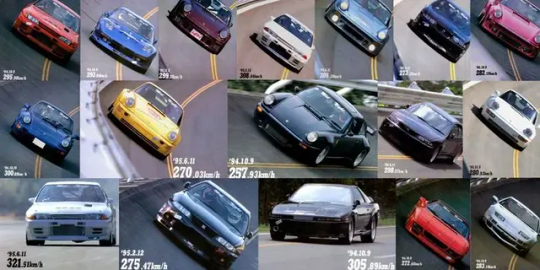

The Mid Night Club didn't focus on acceleration or cornering ability; their sole objective was top speed. To gain entry into this exclusive group, prospective members had to demonstrate their ability to maintain a speed of at least 260 km/h (160 mph) for prolonged periods and do so safely. Despite the apparent paradox, the club's gentlemen's code required members to avoid endangering others, and any reckless behavior would result in immediate expulsion.
Newcomers who met these criteria became apprentice members, needing to attend every meeting for a year before becoming full members. Throughout its existence, the club had about 30 members on average, peaking at 75. Most members could sustain speeds of 305 km/h (190 mph), while top racers could exceed 322 km/h (200 mph). Races typically began from speeds of 100-120 km/h (60-75 mph), with the third car in the pack signaling the start by honking.
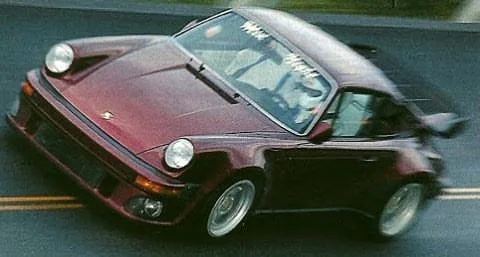
Yoshida Special's 930, often referred to as the "Blackbird," is the most iconic car from the Mid Night Club, and for good reason. This extensively modified Porsche 911 Turbo (930) boasts a 3.6-liter turbocharged flat-six engine that delivers 700 bhp. It is rumored that the owner invested around $2 million in modifications. This substantial investment was necessary to create a machine capable of consistently maintaining speeds of 350 km/h (217 mph) for over 15 minutes—a feat that was challenging and costly in the mid-1990s and remains so today. Remarkably, the Blackbird is still operational.

The ABR-Hosoki Fairlady Z S130, another renowned car of a Mid Night Club member, was a significant rival to the Blackbird. Originally a 1978 Nissan 280ZX, it underwent extensive modifications to become a formidable show car and eventually made its way to the Wangan. This vehicle boasts 680 horsepower and is tuned to race at speeds of 330 km/h (205 mph), with a maximum capability of reaching 348 km/h (216 mph). There is a rumor that it once outpaced the Blackbird on the Wangan, but this remains unverified.
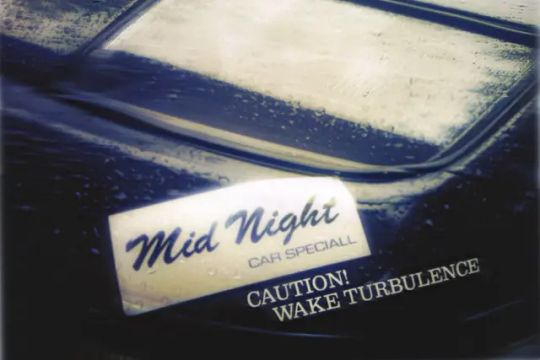
The Mid Night Club remains a legendary chapter in the annals of street racing history. From the iconic Blackbird Porsche 930 to the formidable ABR-Hosoki Fairlady Z S130, these cars and their drivers pushed the boundaries of speed and engineering. With a strict code of conduct prioritizing safety and skill, the club's elite members and their high-performance machines continue to inspire awe and fascination among car enthusiasts and the broader public alike.
The Mid Night Club, disbanded in 1999 following a tragic incident. During a high-speed encounter with a local Bōsōzoku biker gang, a collision occurred, resulting in the hospitalization of six innocent civilians and the deaths of two bikers. This incident violated the club's strict code against endangering other drivers, prompting its immediate dissolution.
#JDM#EUDM#Street Racing#Wangan Midnight#Wangan#Car Club#The Mid Night Club#The Mid Night Racing#Japanese Cars#Blackbird#Devil Z#Car Culture#日本のストリートレーシング#ミッドナイトクラブ#ミッドナイトレーシングチーム#湾岸ミッドナイト#首都高バトル#非合法ストリートレーシング
13 notes
·
View notes
Photo



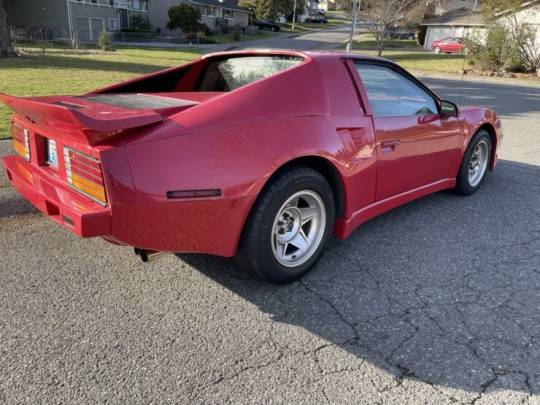
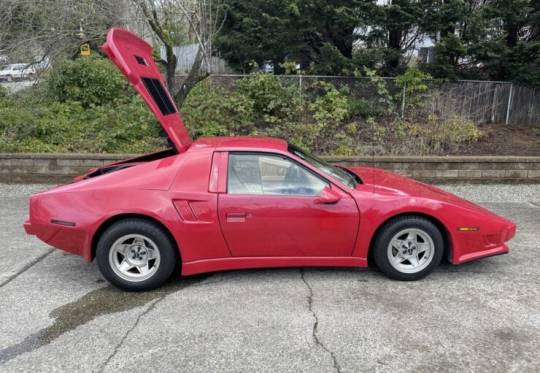
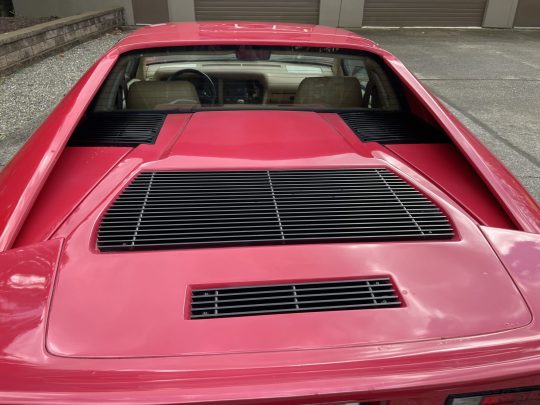
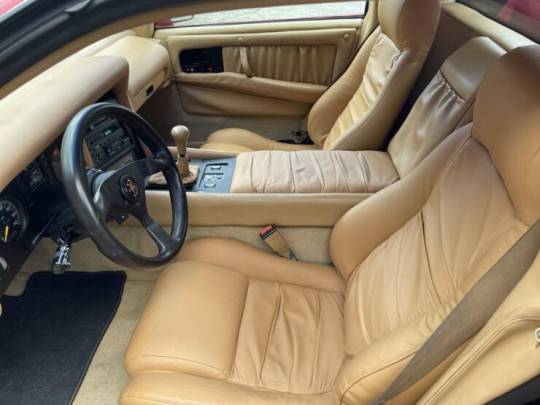

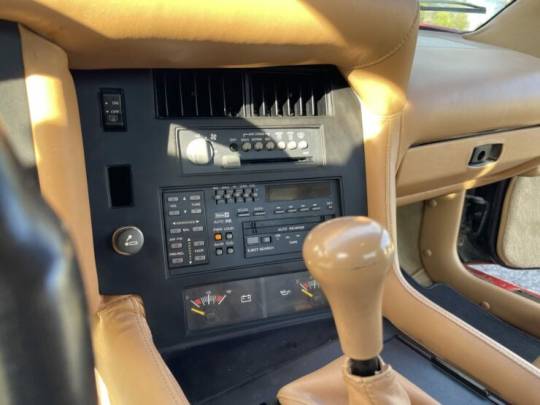

Enterra Vipre
The Enterra Vipre was developed in the mid-1980s by a group of waiters at the Keg Restaurant on Vancouver’s Granville Island. Somehow they managed to secure a grant from the Canadian Scientific Research Council for $10 million CAD, and perhaps not surprisingly it all went wrong shortly after.
Whoever these waiters were they were astonishingly adept salesmen. Not only did they talk their way into that $10 million CAD government grant, but they also talked General Motors into selling their cars in the USA right out of Pontiac dealerships – with a full manufacturer’s warranty no less.
Exactly how a group of waiters came up with the idea of starting their own car company may be lost to history, but we do know that in the early-to-mid 1980s the waitstaff at the Keg Restaurant on Vancouver’s Granville Island hatched a plan to launch their own custom car brand and call it Cymbria.
Rather than building a car from scratch as Bricklin has done a decade earlier before collapsing into bankruptcy the team at Cymbria decided too instead base their car on a preexisting production sports car to save time and money.
The car they chose was arguably the hottest American sports car of the time, the Pontiac Fiero, an affordable mid-engined car with a lightweight fiberglass body. Cymbria developed their own custom bolt-on fiberglass body for the car, then they developed a more luxurious interior, they doubled the sticker price, and put their car on the market.
By the time the initial problems with the body moulds and ill-fitting panels had been rectified it was 1986 and the company had changed its name to Enterra, possibly as a way to leave some space between themselves and the negative press that the earlier 1984 Cymbria prototype had attracted.
The styling of the Enterra Vipre was perhaps a little misleading. It looked like a mid-engined supercar that was doing 200 mph even standing still. In reality it was powered by the standard 2.8 liter Pontiac V6 making just 140 bhp and 170 lb ft of torque.
When the Fiero was still new and exciting back in 1983 and 1984 many kit car and low-volume automakers hailed it as their savior. Its steel spaceframe chassis, mid-engined layout, and easy-to-remove fiberglass outer body panels made it ideally suited to modification.
Countless Ferrari replica kit cars were based on the Fiero, there were also Lamborghini kits, and kits replicating other models. Interestingly one of those Ferrari replica designs was the Pontiac Mera – it had a bodykit designed to emulate the Ferrari 308 GTS which was being used in the popular Magnum P.I. TV series in the 1980s. 159 of them were made and sold through Pontiac dealers in the USA before the Ferrari lawyers got involved and shut the operation down.
The Canadian answer to this Fiero phenomenon was the Enterra Vipre. Its design was clearly influenced by the Ferraris of the time including the F40, though it was carefully designed so as not to be a replica of any single model – therefore resistant to the famously litigious Ferrari legal representatives in the United States.
The first prototype was built in 1984 as the Cymbria Vipre, however the poor fitment of the fiberglass body panels and overall build quality left a lot to be desired. The moulds had to be completely redone, by the time they were ready it was 1986. The car was relaunched, now as the Enterra Vipre, with a price of over $30,000 USD – the equivalent to $71,277 USD in 2023 and roughly double the cost of a standard V6 Fiero.
Despite the fact that the car was being sold through selected Pontiac dealerships in the USA it was a complete flop. The lack of brandname awareness for Enterra coupled with the high price and the fact that the car had slightly worse performance than the stock V6 Fiero (due to to the larger/heavier body) resulted in dismal sales.
57 notes
·
View notes
Text
By Oliver Milman
The Guardian
July 5, 2023
Exclusive: new database shows 1,500 US lobbyists working for fossil-fuel firms while representing universities and green groups
More than 1,500 lobbyists in the US are working on behalf of fossil-fuel companies while at the same time representing hundreds of liberal-run cities, universities, technology companies and environmental groups that say they are tackling the climate crisis, the Guardian can reveal.
Lobbyists for oil, gas and coal interests are also employed by a vast sweep of institutions, ranging from the city governments of Los Angeles, Chicago and Philadelphia; tech giants such as Apple and Google; more than 150 universities; some of the country’s leading environmental groups – and even ski resorts seeing their snow melted by global heating.
The breadth of fossil fuel lobbyists’ work for other clients is captured in a new database of their lobbying interests which was published online on Wednesday.
It shows the reach of state-level fossil fuel lobbyists into almost every aspect of American life, spanning local governments, large corporations, cultural institutions such as museums and film festivals, and advocacy groups, grouping together clients with starkly contradictory aims.
For instance, State Farm, the insurance company that announced in May it would halt new homeowner policies in California due to the “catastrophic” risk of wildfires worsened by the climate crisis, employs lobbyists that also advocate for fossil fuel interests to lawmakers in 18 states.
Meanwhile, Baltimore, which is suing big oil firms for their role in causing climate-related damages, has shared a lobbyist with ExxonMobil, one of the named defendants in the case. Syracuse University, a pioneer in the fossil fuel divestment movement, has a lobbyist with 14 separate oil and gas clients.
“It’s incredible that this has gone under the radar for so long, as these lobbyists help the fossil fuel industry wield extraordinary power,” said James Browning, a former Common Cause lobbyist who put together the database for a new venture called F Minus. “Many of these cities and counties face severe costs from climate change and yet elected officials are selling their residents out. It’s extraordinary.
“The worst thing about hiring these lobbyists is that it legitimizes the fossil fuel industry,” Browning added. “They can cloak their radical agenda in respectability when their lobbyists also have clients in the arts, or city government, or with conservation groups. It normalizes something that is very dangerous.”
The searchable database, created by compiling the public disclosure records of lobbyists up to 2022 reveals:
Some of the most progressive-minded cities in the US employ fossil fuel lobbyists. Chicago shares a lobbyist with BP. Philadelphia’s lobbyist also works for the Koch Industries network. Los Angeles has a lobbyist contracted to the gas plant firm Tenaska. Even cities that are suing fossil fuel companies for climate damages, such as Baltimore, have fossil fuel-aligned lobbyists.
Environmental groups that push for action on climate change also, incongruously, use lobbyists employed by the fossil fuel industry. The Environmental Defense Fund shares lobbyists with ExxonMobil, Calpine and Duke Energy, all major gas producers. A lobbyist for the Natural Resources Defense Council Action Fund also works on behalf of the mining company BHP.
Large tech companies have repeatedly touted their climate credentials but many also use fossil fuel-aligned lobbyists. Amazon employs fossil fuel lobbyists in 27 states. Apple shares a lobbyist with the Koch network. Microsoft’s lobbyist also lobbies on behalf of Exxon. Google has a lobbyist who has seven different fossil fuel companies as clients.
More than 150 universities have ties to lobbyists who also push the interests of fossil fuel companies. These include colleges that have vowed to divest from fossil fuels under pressure from students concerned about the climate crisis, such as California State University, the University of Washington, Johns Hopkins University and Syracuse University. Scores of school districts, from Washington state to Florida, have lobbyists who also work for fossil fuel interests.
A constellation of cultural and recreational bodies also use fossil fuel lobbyists, despite in many cases calling for action on the climate crisis. The New Museum in New York City, the Los Angeles County Museum of Art and the Sundance Film Institute in Utah all share lobbyists with fossil fuel interests, as does the Cincinnati Symphony Orchestra and the Florida Aquarium. Even top ski resorts such as Jackson Hole and Vail, which face the prospect of dwindling snow on slopes due to rising temperatures, use fossil fuel lobbyists.
Cities, companies, universities and green groups that use fossil fuel-linked lobbyists said this work didn’t conflict with their own climate goals and in some cases was even beneficial. “It is common for lobbyists to work for a variety of clients,” said a spokesperson for the University of Washington.
A spokesperson for the Los Angeles County Museum of Art said it had retained a lobbyist on the F Minus database “for a period during the pandemic … We are not currently working with the company.”
Read more.
3 notes
·
View notes
Text

Thank you for art, God. Here’s to more years of sketches and artwork.
-----
Hi here are some more cars I’ve thrown together over the past few months
The Tarantino BC19 Adriatico Spyder is a grand touring focused version of the regular BC19, with a retractable hardtop and a gated manual to make the perfect road and day a decadent experience. Minerva’s second favorite car, behind her beloved Superberlinetta. I’ve shown this one on Twitter before, but there are some additional views thrown in to this version you’re seeing here.
Another car I showed on Twitter but tweaked a bit for this group picture is the Eastwood Motors Razorback SC, Eastwood’s latest muscle car. One of the manufacturers that defined the muscle car archetype from its birth in the 1960s, Eastwood has spared no expense in making sure that the Razorback is loud, quick, and loves going sideways. The sun might be setting on the traditional American muscle car—considering Eastwood’s own Slade is now rumored to go mid-engine for the next generation—but, with the Razorback SC, Eastwood is making sure it will not ride off into the sunset quietly.
Speaking of the Eastwood Motors Slade, that last generation’s also featured here. This is one of the cars I drew in ArtFight, but I never drew it with the door closed or from the front angle, so here it is showcasing just those views. It’s quite difficult compared to a Kusunoki Habu, but like the Habu, the Slade delivers a fantastic balance of casual fun and track readiness, with plenty of variants that dial up the power. Immensely popular—you can’t go three minutes in Amadis County without seeing at least one.
Rounding out the three Eastwoods in this upload is the Eastwood Motors Celeritas V-Max. A rare hypercar from the Eastwood stable, the Celeritas V-Max was built with reduced downforce and produces more than 1500 BHP—with a very modified Slade engine as a base, no less—on the quest to do 300 MPH.
Modern supercars and hypercars owe a lot to the Fujiwara Anima. Though the Anima is just a sports car, its superb reliability and ease of use made it clear to the world that a mid-engine car didn’t have to be difficult to live with. It set such a high standard for performance cars that Kusunoki keeps one in their museum as a token of their respect and acknowledgement of the Anima’s contribution to the car world.
From across the pond, the Rochefort Azore is an important piece of automotive history and Rochefort’s fame, with classic 60s beauty and impressive technology (for its time). As long as you take it for a spin knowing that it’ll win more beauty prizes and gazes than races, you won’t be disappointed. But it’s no bore—its naturally-aspirated V12 sings, and it’s still quite comfortable and spacious (relatively speaking) despite its age.
The Mishima Peo is not the quickest car here—in stock form, at least. With a very vibrant and passionate tuning community, it’s not uncommon to find Peos running with extreme engine upgrades or swaps that make them produce three to four times the stock car’s power, and there’s a plethora of bodykits and parts available to modify them into anything from a street car, to a weekend time attack monster, to a professional-grade race car, and anything in between. Shoyuwave’s grassroots (and even top-level) racing just isn’t the same without one of these present.
Lastly, the other ArtFight car I made was the Ryberg Thresher. It’s a muscle car debuting in the same decade as the Slade. While the latest Thresher is now mid-engined (and forms the basis for the R427, yet another car I created for ArtFight), the older generations of the Thresher started out as front-engine rear wheel drive machines. Threshers are a little more forgiving to drive than the Slade, but don’t be fooled—they love a good drift and can be very easily persuaded to start one.
What’s your pick from this lot?
-----
Thanks. Twitter. deviantArt.
#car#car design#vehicle#vehicles#car art#car artist#art#artwork#my art#my artwork#digital art#digital artwork#digital artist#supercar#hypercar#sports car#muscle car#beginner artist#amateur artist#artists on tumblr#artist on tumblr#beginner artwork
2 notes
·
View notes
Text
BHP Group Limited (ASX:BHP) : Latest News, Stock Price
BHP Group Limited, also known as BHP, is a multinational mining, metals, and petroleum company headquartered in Melbourne, Australia.
ASX:BHP is one of the world's largest resource companies and is a major producer of a range of commodities, including iron ore, copper, coal, oil and natural gas, and is also a significant player in the global nickel, zinc, and lead markets.
BHP Group has operations in more than a dozen countries and employs more than 62,000 people globally. In addition to its mining and petroleum operations, BHP also has a significant presence in the energy sector, with interests in natural gas, electricity, and renewable energy. The company is listed on the Australian Securities Exchange and is a component of the S&P/ASX 200 index.

0 notes
Text
‘You are killing us’: Mariana survivors face ill health, lost culture and a long wait for justice
When a dam burst eight years ago in a Brazilian mining town, the toxic mud swept downriver, crushing all before it. Affected communities are still fighting in the courts – and mourning a way of life that has disappeared for ever

Marino D’Ângelo Júnior regularly takes antidepressants and medication to help him sleep. A former resident of Paracatu, a district of the city of Mariana in the Brazilian state of Minas Gerais, the 54-year-old says he has lost his sense of self since 60m cubic metres of mining waste flattened his town, forcing him to live in a rented property near the centre of an environmental disaster that shocked the world eight years ago.
D’Ângelo is one of the survivors of the collapse of the Fundão tailings dam near Mariana. Almost a decade on, the people affected by Brazil’s worst environmental tragedy still await justice as they live under the shadow of the toxic mud that swept away life as they knew it.
“The collapse of a dam isn’t what you see on TV – the river of mud destroying things,” says D’Ângelo. “A dam failure entails an infinity of invisible ruptures. The rupture of connections, family links, communities, histories, dreams.”
D’Ângelo used to own a herd of 60 dairy cows before the incident but he began to sell them off as he found himself unable to work properly, which led to him being “forced into poverty”. A member of the Commission for People Affected by the Fundão Dam, D’Ângelo holds the mining companies responsible for the disaster and the subsequent neglect of the affected populations who still struggle with losing their livelihoods and way of life.
The dam – which was managed by Samarco, a joint venture between the Brazilian mining company Vale and the Anglo-Australian company BHP – collapsed on 5 November 2015, and caused mining waste to flow nearly 700km (430 miles) down the Rio Doce into the Atlantic Ocean, devastating everything in its path.
The torrent of toxic sludge buried villages, killed 19 people and left thousands more homeless. Nearly a decade later, hundreds of thousands of people continue to suffer the effects daily, in the contaminated soil unfit for agriculture, the diseased fish they catch in the polluted river, and the breakdown of their communities and cultural traditions.
No one has yet been held accountable for the socio-environmental disaster. BHP, Vale, Samarco and eight other defendants stand accused of environmental crimes in a Brazilian court case that has been dragging on for seven years. They are due to face a judge for questioning this month.
Separately, about 700,000 people are suing BHP in a UK court, seeking £36bn in reparations in English legal history’s most significant group claim. BHP denies liability.
Continue reading.
#brazil#brazilian politics#politics#environmental justice#environmentalism#indigenous rights#mining#mariana dam burst 2015#mod nise da silveira#image description in alt
48 notes
·
View notes
Text
The Peugeot 305 Rallye V6!
One of the unraced Group B cars, the Rallye V6 has 250 bhp, and it is lighter and smaller than the 504 Coupé V6. The car was originally going to be used, but Peugeot would later switch to the 205 T16 as a Group B monster.

#moomin#moominoc#moominsona#moominspectra#moomintroll#peugeot 305 rallye v6#305 rally#unraced group b#group b
2 notes
·
View notes
Text
Kia Elan 1996-1999: A Suprise Entry Into The Sports Car World
Surprising to some, the Stinger wasn't Kia's first endeavour in the sports car department the Elan was created using the M100 Lotus Elan platform purchased from Lotus In 1995 after they were forced to axe the front drive sports car due to low sales. This was also around the time Lotus was shifting ownership from GM to Bugatti and later the group responisble for Proton, the folks that made the mighty Iswara!
Due to Korean laws surrounding the protection of jobs, the Elan's original 1.6 turbo four cylinder Isuzu motor was swapped out for a home grown Kia T8D 1.8 petrol producing 135 BHP allowing the Kia variant to reach 60 in 8.8 seconds and soldier on to 128 mph. The revised Elan also featured altered suspension which raised the ride hight as well as a revised Interior and steering wheel pulled out of Kia's more mundane cars like the Sephia, Sportage and Credos just given a red stripe. The Elan over the course of those 3 years old sold between 792 and 1056 cars worldwide (though 99% percent were sold In Korea) It was sold In Japan as the Kia Vigato and In Germany as the Kia Roadster and was only sold In Left Hand Drive.


7 notes
·
View notes
Text
ASX BHP: A Diversified Mining and Petroleum Giant with Strong Financial Performance
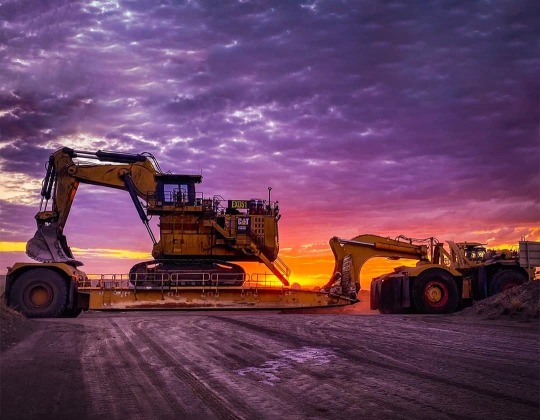
BHP Group, also known as ASX BHP, is a multinational mining, metals, and petroleum company headquartered in Melbourne, Australia. With operations in over 90 locations worldwide, BHP is one of the largest diversified resource companies in the world.
In this article, we will take a closer look at ASX BHP, including its history, current operations, financial performance, and future prospects.
History of ASX BHP
BHP was originally founded in 1885 as the Broken Hill Proprietary Company Limited, named after the Broken Hill silver and lead mine in western New South Wales, Australia. Over the years, the company expanded into other commodities, including iron ore, copper, coal, and petroleum.
In 2001, BHP merger with Billiton plc, a mining company based in London, to form BHP Billiton. The merger created one of the largest mining companies in the world, with operations in over 25 countries.
In 2017, the company simplified its name to BHP Group, reflecting its focus on its core operations in mining, metals, and petroleum.
Current Operations
BHP operates in four main segments: iron ore, copper, coal, and petroleum. The company is the world's largest producer of iron ore and the second-largest producer of copper.
Iron Ore: BHP's iron ore operations are located in the Pilbara region of Western Australia. The company's operations in the region include five mines, a railway network, and two port facilities.
Copper: BHP's copper operations are located in Chile, Peru, and the United States. The company's copper assets include the Escondida mine in Chile, the world's largest copper mine.
Coal: BHP's coal operations are located in Australia, Colombia, and South Africa. The company produces both metallurgical coal (used in steelmaking) and thermal coal (used in electricity generation).
Petroleum: BHP's petroleum operations are located in Australia, the Gulf of Mexico, Trinidad and Tobago, and the Caribbean. The company produces both oil and gas.
Financial Performance
In the first half of the 2022 financial year, BHP reported a net profit of US$10.9 billion, up from US$3.9 billion in the same period the previous year. The company attributed the increase to higher commodity prices and increased production.
BHP's share price has also performed well in recent years, with the company's market capitalization reaching over A$300 billion in 2021.
Future Prospects
BHP is well-positioned to benefit from the growing demand for commodities, particularly from emerging economies such as China and India. The company has also been investing in renewable energy and technology to reduce its carbon footprint and improve its environmental performance.
In 2021, BHP announced plans to invest over US$5 billion in its petroleum business over the next five years, focusing on high-return growth opportunities in the Gulf of Mexico and Trinidad and Tobago.
Overall, ASX BHP is a well-established and financially sound company with a strong position in the global mining, metals, and petroleum markets. Its focus on sustainable and responsible business practices, combined with its diversified operations, make it a compelling investment opportunity for long-term investors.
Also check related tickers
ASX CBA
ASX FMG
ASX APT
ASX NAB
2 notes
·
View notes
Photo

ИИ-бум поднимет спрос на медь почти в 2 раза, что усилит глобальный дефицит
Бурно развивающийся сектор искусственного интеллекта значительно увеличит мировой спрос на медь, усугубляя и без того острую нехватку этого металла. По данным горнодобывающей компании BHP, к середине столетия потребность в меди в связи с развитием искусственного интеллекта возрастет до 52,5 млн тонн в год, что на 72% больше, чем в 2021 году.
Подробнее на https://7ooo.ru/group/2024/09/18/628-ii-bum-podnimet-spros-named-pochti-v2-raza-chto-usilit-globalnyy-deficit-grss-342273552.html
0 notes